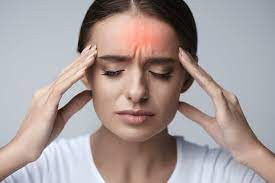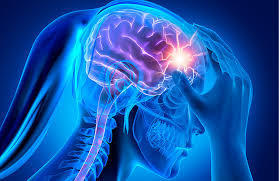Definisi
Sakit kepala atau sefalgia dalam terminologi medis, adalah keluhan nyeri yang dirasakan pada bagian kepala manapun. Sakit kepala adalah kondisi yang sangat umum ditemukan dan kebanyakan orang bisa mengalaminya beberapa kali semasa hidupnya. Jenis sakit kepala beragam dan derajat nyeri yang dirasakan setiap orang juga bisa berbeda.
Penyebab
Meskipun kebanyakan kasus sakit kepala tidak berbahaya, namun terdapat beberapa jenis sakit kepala yang memerlukan pemeriksaan lanjut dan bisa menjadi tanda adanya suatu kondisi serius. Secara garis besar, sakit kepala tergolong sebagai sakit kepala primer dan sakit kepala sekunder.
Sakit Kepala Primer
Jenis sakit kepala ini umumnya terjadi sendiri dan tidak disebabkan oleh suatu penyakit atau masalah kesehatan. Sakit kepala primer lebih banyak ditemukan dari sakit kepala sekunder, dan nyeri cenderung terjadi berulang. Biasanya, sakit kepala muncul karena adanya gangguan pada struktur di kepala seperti pembuluh darah, selaput pembungkus otak, jaringan otot, area wajah, atau saraf-saraf di kepala dan tulang belakang. Masih tidak diketahui dengan pasti bagaimana sakit kepala primer bisa terjadi, karena nyeri muncul tanpa adanya suatu gangguan yang jelas.
Beberapa orang dapat memiliki gen yang membuat mereka lebih mungkin mengalami sakit kepala primer. Sakit kepala primer umumnya tidak berbahaya, namun dapat sangat nyeri dan mengganggu aktivitas sehari-hari. Jenis sakit kepala yang tergolong sebagai sakit kepala primer meliputi:
- Tension-type headache (TTH)
Jenis sakit kepala yang sering ditemukan, dirasakan di kedua sisi kepala dan bisa berlangsung selama 30 menit hingga satu minggu. TTH bisa terjadi karena berbagai faktor seperti stres, kurang tidur, adanya tegangan otot, karena melihat layar perangkat elektronik terlalu lama, atau bahkan terjadi tanpa sebab khusus.
Anda bisa membaca lebih lanjut mengenai TTH di sini.
- Migrain
Juga dikenal sebagai sakit kepala sebelah yang terasa berdenyut. Migrain lebih banyak ditemukan pada perempuan dibanding laki-laki. Nyeri kepala bisa berlangsung selama beberapa jam hingga beberapa hari. Beberapa orang juga bisa mengalami keluhan seperti penurunan kemampuan penglihatan, melihat kilatan cahaya, kesemutan, atau mual-muntah yang menyertai sakit kepala.
Migrain bisa dipicu oleh siklus menstruasi, kurang tidur, alkohol, tidak makan, stres, atau karena bebauan, obat maupun makanan tertentu.
Anda bisa membaca lebih lanjut mengenai migrain di sini.
- Sakit kepala klaster
Jenis sakit kepala bisa menyebabkan nyeri yang sangat hebat, tetapi tergolong jarang ditemukan. Sakit kepala klaster umum ditemukan pada pria dewasa. Nyeri kepala bisa berlangsung beberapa hari atau beberapa minggu. Gejalanya cukup khas, pasien bisa merasakan nyeri hebat pada satu sisi kepala dan di area mata, di mana mata juga bisa merah dan hingga keluar air mata. Nyeri kepala umumnya selalu dirasakan pada satu sisi kepala yang sama, di malam atau dini hari.
- Sakit kepala terus-menerus (New daily persistent headache, NDPH)
Pada kondisi ini, sakit kepala tiba-tiba muncul suatu hari dan terjadi terus-menerus tanpa perbaikan dalam 24 jam. NPDH banyak terjadi pada individu yang tidak memiliki riwayat sakit kepala sebelumnya. Karena terjadi terus-menerus, sakit kepala bisa sangat mengganggu kehidupan dan aktivitas pasiennya.
Sakit Kepala Sekunder
Suatu nyeri kepala tergolong sebagai sakit kepala sekunder bila disebabkan oleh suatu masalah atau kondisi medis. Jenis sakit kepala ini biasanya menjadi gejala atau tanda dari suatu penyakit. Beberapa penyakit yang bisa menyebabkan sakit kepala sebagai salah satu gejalanya adalah:
- Infeksi selaput otak (meningitis).
- Cedera kepala atau perdarahan otak.
- Tumor otak.
- Kebocoran cairan serebrospinal dari selaput yang menyelubungi otak dan sumsum tulang belakang.
- Peningkatan tekanan darah yang tiba-tiba dan berat.
- Infeksi sinus, telinga atau gigi.
- Sakit gigi yang menjalar ke kepala.
- Dehidrasi atau kekurangan cairan.
Faktor Risiko
Terkadang, adanya riwayat sakit kepala pada keluarga juga bisa membuat anak mengalami hal yang sama. Contohnya pada migrain, anak yang memiliki orang tua dengan migrain memiliki risiko empat kali lebih tinggi untuk mengalami hal yang sama.
Sementara itu, beberapa sakit kepala primer dapat dicetuskan oleh faktor gaya hidup atau situasi tertentu, seperti:
- Minum alkohol, terutama anggur merah.
- Konsumsi makanan tertentu seperti daging olahan, kafein, makanan fermentasi atau cokelat.
- Kebiasaan merokok atau terpapar asap rokok.
- Perubahan pola tidur atau kurang tidur.
- Postur tubuh yang buruk bisa menyebabkan tegangan pada otot.
- Aktivitas fisik atau olahraga yang berat.
- Makan tidak teratur.
- Bau menyengat dari zat kimia rumah tangga atau parfum.
Gejala
Gejala utama sakit kepala adalah nyeri pada kepala yang juga bisa menjalar ke area wajah. Sensasi nyeri bermacam-macam, ada yang berdenyut, sensasi tertekan, rasa berat atau tajam. Nyeri kepala bisa ringan hingga berat, dirasakan pada satu sisi atau seluruh kepala, berlangsung terus-menerus atau hilang timbul.
Tergantung jenisnya, nyeri kepala bisa disertai dengan keluhan lain, seperti:
- Mual atau muntah
- Hidung berair
- Leher atau bahu terasa kaku
- Mata berair
- Tidak nyaman saat mendengar bising atau melihat cahaya
- Sensitif dengan bau
- Kelemahan otot
- Pusing
- Kesemutan
- Anggota gerak sulit digerakkan
- Kejang
- Demam, dll.
Diagnosis
Untuk mendiagnosis suatu sakit kepala, dokter akan mendiskusikan riwayat kesehatan Anda dan bertanya mengenai gejala sakit kepala yang Anda alami. Setelah melakukan evaluasi riwayat medis dan keluhan, dokter bisa melakukan pemeriksaan fisik dan saraf. Dokter akan mencari tanda dan gejala suatu penyakit atau kondisi yang dapat menyebabkan sakit kepala.
Meskipun pemeriksaan radiologi juga bisa bermanfaat untuk menyingkirkan kemungkinan adanya penyakit lain, namun pemeriksaan ini tidak terlalu membantu dalam mendiagnosis sakit kepala primer seperti migrain, sakit kepala cluster, atau tension-type headache.
Pada kondisi di mana dokter mencurigai adanya suatu kondisi medis lain yang diderita pasien, dokter bisa menyarankan untuk dilakukan pemeriksaan radiologi. CT scan atau MRI dapat membantu diagnosis pada kondisi sakit kepala yang berkaitan dengan masalah sistem saraf pusat. Kedua pemeriksaan ini bisa memperlihatkan bila terdapat suatu abnormalitas pada gambaran otak.
Tata Laksana
Terapi sakit kepala bergantung pada tipenya. Salah satu aspek paling penting dalam menangani sakit kepala primer adalah menemukan pencetusnya. Dengan mengenali pencetusnya, umumnya dengan membuat catatan sakit kepala. Pencetus tersebut bisa dihindari untuk menurunkan frekuensi sakit kepala.
Umumnya pada sakit kepala yang tidak sering terjadi, obat antinyeri yang dijual bebas seperti parasetamol atau ibuprofen bisa mengatasi sakit kepala. Namun jangan lupa untuk berkonsultasi ke dokter mengenai pemakaian obat tersebut. Pemakain obat antinyeri yang terlalu sering malah bisa mencetuskan sakit kepala baru. Pada beberapa penyakit, dokter juga bisa memberikan obat untuk mencegah sakit kepala.
Pada sakit kepala sekunder, dokter akan mencari kondisi medis yang menjadi penyebab munculnya sakit dan mengatasi kondisi medis tersebut.
Komplikasi
Sakit kepala bisa sangat mengganggu aktivitas dan mengurangi produktivitas. Sakit kepala menjadi salah satu alasan orang-orang tidak masuk sekolah atau tidak bisa bekerja.
Komplikasi sakit kepala seringnya tidak disebabkan oleh sakit kepala itu sendiri, namun akibat terapinya. Sebagai contoh, penggunaan obat nyeri berlebihan dapat menyebabkan sakit lambung dan perdarahan saluran cerna.
Sementara itu pada sakit kepala sekunder, komplikasi yang bisa terjadi umumnya tergantung dengan kondisi medis penyebab sakit kepala. Pasien bisa mengalami disabilitas sementara, gangguan saraf berat hingga kematian.
Pencegahan
Kunci mencegah sakit kepala primer adalah dengan menghindari pencetur sakit kepala. Pencetus sakit ini sangat spesifik untuk setiap orang. Teknik manajemen stres dan relaksasi dapat membantu Anda mengatasi pencetus dengan lebih baik.
Kapan Harus ke Dokter?
Jika Anda atau anak Anda mengalami salah satu dari gejala sakit kepala di bawah ini, segera cari pertolongan medis:
- Sakit kepala baru yang timbul mendadak dan terasa sangat berat.
- Sakit kepala yang disertai dengan demam, sesak napas, leher kaku, atau ruam.
- Sakit kepala yang terjadi setelah cedera kepala atau kecelakaan.
- Sakit kepala disertai kelemahan tubuh, kesemutan, kesulitan bicara, atau kejang.
Jika Anda mengalami sakit kepala yang sering atau berat, Anda juga disarankan untuk berkonsultasi ke dokter. Penting untuk mendapatkan diagnosis sakit kepala yang tepat sehingga dokter dapat memberikan terapi spesifik untuk membantu Anda merasa lebih baik.
Mau tahu informasi seputar penyakit lainnya? Cek di sini, ya!
- dr Hanifa Rahma
Headache: What it is, types, causes, symptoms & treatment (2022) Cleveland Clinic. Available at: https://my.clevelandclinic.org/health/diseases/9639-headaches (Accessed: February 6, 2023).
Headaches (2021) healthdirect. Available at: https://www.healthdirect.gov.au/headaches (Accessed: February 6, 2023).
Colleen Doherty, M.D. (2021) What are the symptoms of a headache?, Verywell Health. Verywell Health. Available at: https://www.verywellhealth.com/headache-symptoms-1719563 (Accessed: February 6, 2023).




/6302128ebf030.jpg)
/62d2449c2c10c.jpg)






